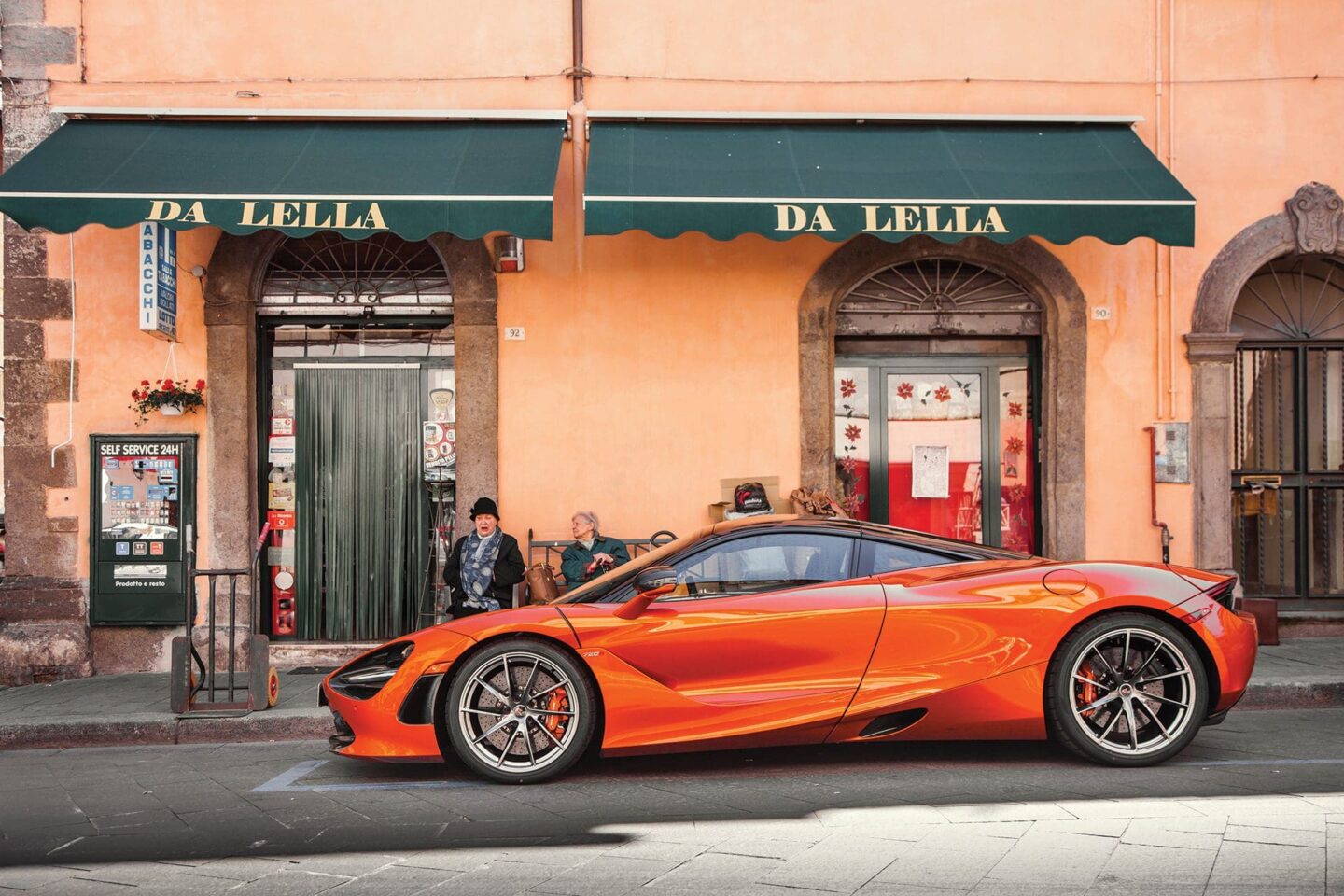
How the 720S paved the way for modern-day McLaren
As the McLaren 720S bows out of production, a reminder of just how good the Ferrari-beater really was
Sandwiches. Egg-and-watercress and cucumber-and-cheese, if memory serves. Plus, some vol-au-vents, a selection of mini quiches and a smattering of those tiny pizza things. You’ve parked down the road, beyond sight, out of earshot. You’d hate to draw attention from the little man. It’s his big day, after all. But now the post-head-wetting revelries have reached their natural conclusion and, as a parting gift, your mate’s mum insists you take home a platter of savoury leftovers.
You’ve been super complimentary all afternoon. It was, in fairness, a top-notch spread. You’ll look insincere if you don’t now accept the fast atrophying smörgåsbord. So, you say your goodbyes, high-five the marauding toddlers, and take receipt of the withering pastry turrets. You’ll work out where, exactly, you store a plastic salver of finger food in a two-seat supercar when you get back to the motor.
Granted, it’s not the sort of hypothetical most supercar buyers will workshop when mulling over their next splurge. But, hey, the best-laid schemes of men and motors gang aft a-gley. Or something. As it turns out, the cabin beneath the bonnet of the McLaren 720S can handle two weekender-sized travel bags, or a whopper of a serving plate, just fine. The rest of the motor can do a lot more besides.

The 720S was important, let’s not forget. The most important car in McLaren’s modern history, perhaps. It dropped in 2018, a replacement to the outgoing, much-loved 650S. Some carbon-fibre wizardry meant that the car weighed just 1,419kg. It was basically a cloud. That meant it was fast. Faster than the Ferrari 488 GTB. Faster than the Lamborghini Huracán. Yikes.
Figures, for what they’re worth. Nought to 62 mph in 2.9 seconds. Nought to 124 mph in 7.8 seconds. The 720S will top out at 212 mph. Electrically-aided hyper-cars aside, only the Bugatti Chiron Super Sport (2.4 seconds) and Koenigsegg Jesko (2.6 seconds) are quicker. But those are cars designed for the UAE. They cost £2.7 million and £2.3 million, respectively. The McLaren will go toe-to-toe for a tenth of the price. A bargain, when you put it like that.

The 720S is a physical thing, but not in a cage-fighter sort of way. The 488 GTB is a supermodel with a coke habit. The Huracán has served a five-year stretch for GBH. Poised and stealthy, the 720S has a black belt in Krav Maga. It doesn’t need to trash talk in the lead-up to the scrap. It’ll stalk you in the shadows and drop you with a single finger. Mine was dark grey, which only added to the whole 9th Dan vibe.
The McLaren is not as unhinged-looking as a Lambo. It doesn’t make you gawp like a Ferrari. The 720S is suggestive curves and what might be. The quiet one in the corner. Don’t push me. It looks fast standing still, like a 100-metre sprinter. I got taken up in a fighter jet once. That looked fast too (it was; I blacked out). You can tell the McLaren is going to have a similar kick. It’s the bucket seats. And the near-horizontal driving position.
To drivers of A3s and A-Classes on the A13, the McLaren is an invitation. Let’s dance, they say, braking, barking. Bark back and they smile. Anyone over 40 doesn’t give you an inch. You’re the one in a supercar, you move. There are, I assume, far more stressful situations than reversing a £230k supercar out of a backed-up station car park. But, when it’s raining, it’s rush hour, and that car is wider than the Ever Given, it’s up there. At least it was for me.

On the open road the torque is staggering. Up to 770Nm of the stuff. In traffic the 720S is an Akita on a leash. Only keener. The car’s successor, the Artura, is a hybrid. It’s newer, a smidgen quicker, cheaper. It’s also heavier, less powerful, less visceral. Is that going forward, or going backward?
Up front McLaren has stuck a floodlight from Wembley Stadium. It could light up a runway. Inside each headlight are 17 super-bright LEDs; five remain static, the other 12 light up in sequence depending on the direction in which you point the nose. The effect is to cast a searchlight that sweeps around corners as you turn the wheel. The faster you go, the further the lights search. It’s something.
If you open the dihedral doors after it’s been raining, water will trickle onto the seats. That’s a less good thing. It’s a thing you’d have thought someone would have noticed, and sorted. Same goes for the way the driving seat repositions itself once you’ve turned off the engine. It’s annoying. It would be less annoying if the buttons to readjust the seats weren’t so difficult to reach. Your fingers get mullered.

The driving position is not too low; the windscreen has more glass than the bridge of the Symphony of the Seas. The ride is firm, but forgiving. No vol-au-vents were hurt in the making of this review. Not even a spill. The 720S mapped the way for modern-day McLaren. But the manufacturer has now stopped making its masterpiece. New for this year were two new colours. Storm Grey and Volcano Yellow. But that’s it. End of the road. Get one while you can.
For all its futuristic supersonic-ness, Concorde was an analogue thing, too. British Airways keeps one on the lawn at Heathrow. Perhaps McLaren will park a 720S outside its Technology Centre in Woking.
McLaren 720s coupé: The Numbers
Engine: 4-litre v8
0-62mph: 2.9 seconds
Top speed: 212 mph
Max torque: 770 Nm
Max power: 710 bhp
Price: from £231,220






